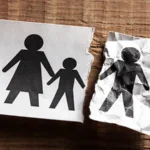“It Is Finished” – But What Was Finished?
“He didn’t say, ‘I am finished.’ He said it was.”
When Jesus cried out, “It is finished” (John 19:30), many take it to mean the entire plan of salvation was completed at that moment. From that view, the gospel message is simple: Jesus did everything – there’s nothing more to be done but to believe. The story is essentially over. All that remains is the question: “Do you accept Him as your Savior?”
But is that really what Jesus meant?
Or was that moment the close of one chapter in a much greater story – one that Jesus Himself will bring to its ultimate conclusion?
The Mission Fulfilled – To That Point
Jesus came to do the will of the Father (John 6:38), to preach the gospel of the Kingdom of God (Luke 4:43), to live a sinless life (1 Peter 2:22), and to offer Himself as the Lamb who takes away the sin of the world (John 1:29).
When He said, “It is finished,” He had completed that stage of the plan: a perfect life, lived in submission, offered as our Passover sacrifice. The mission of the Suffering Servant (Isaiah 53) was fulfilled.
That part of the plan was, indeed, finished.
Not the End – But the Turning Point
To say “It is finished” means there’s nothing left to do stands in tension with everything Jesus and the apostles taught afterward.
Paul, long after the cross, described his own life as a race still in progress (2 Timothy 4:7). He urged believers to keep striving – because salvation is not just about a finished sacrifice. It’s about what that sacrifice makes possible in us.
We are still in a spiritual struggle (Ephesians 6:12). We are still being sanctified. And even Jesus, after His resurrection, continued working – teaching (Acts 1:3), building His Church, sending the Holy Spirit, and preparing for His return. He is still our High Priest (Hebrews 4:14), our Advocate (1 John 2:1), and soon-coming King (Revelation 19:16).
Clearly, the plan wasn’t finished that day. Not for Him – and not for us.
A Completed Step Within a Greater Plan
“It is finished” was a victory shout over what had been accomplished – not a declaration that all was complete. Christ had laid the cornerstone. The penalty for sin was paid. The first phase of the plan was complete.
But the rest – the restoration of the world, the resurrection, the judgment, the Kingdom – was still ahead.
The True Gospel: The Kingdom Yet to Come
This is the missing piece in so much of modern Christianity. Many treat Jesus as the gospel. But He came preaching the gospel – the good news of the Kingdom of God.
That Kingdom didn’t arrive at the cross. Jesus taught us to pray for it still to come (Matthew 6:10). His sacrifice made it possible – but His return will bring it. Until then, we are called not to wait passively, but to prepare actively – living out the very message He began.
Understanding this doesn’t diminish the cross – it magnifies it. His death wasn’t the conclusion. It was the moment that set the rest of the story in motion.
Not the End – But the Call Forward
When we hear “It is finished,” we should pause in deep gratitude.
But we must not stop there.
That cry was not a curtain call. It was a call to action. The most pivotal moment in history had occurred – but the mission continues. The Kingdom is still coming. The story is still unfolding.
And we are part of it.
“Well done, good and faithful servant.”


